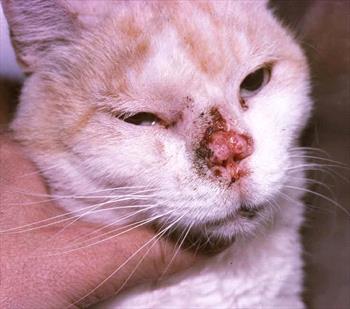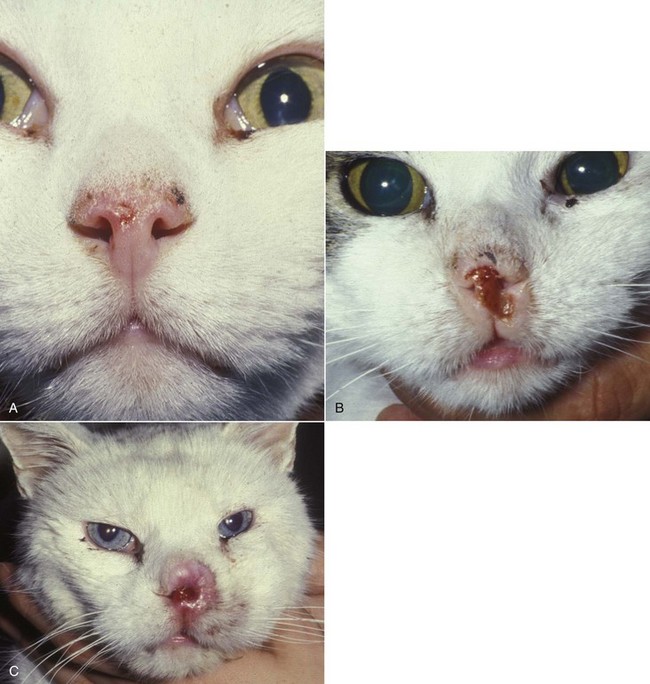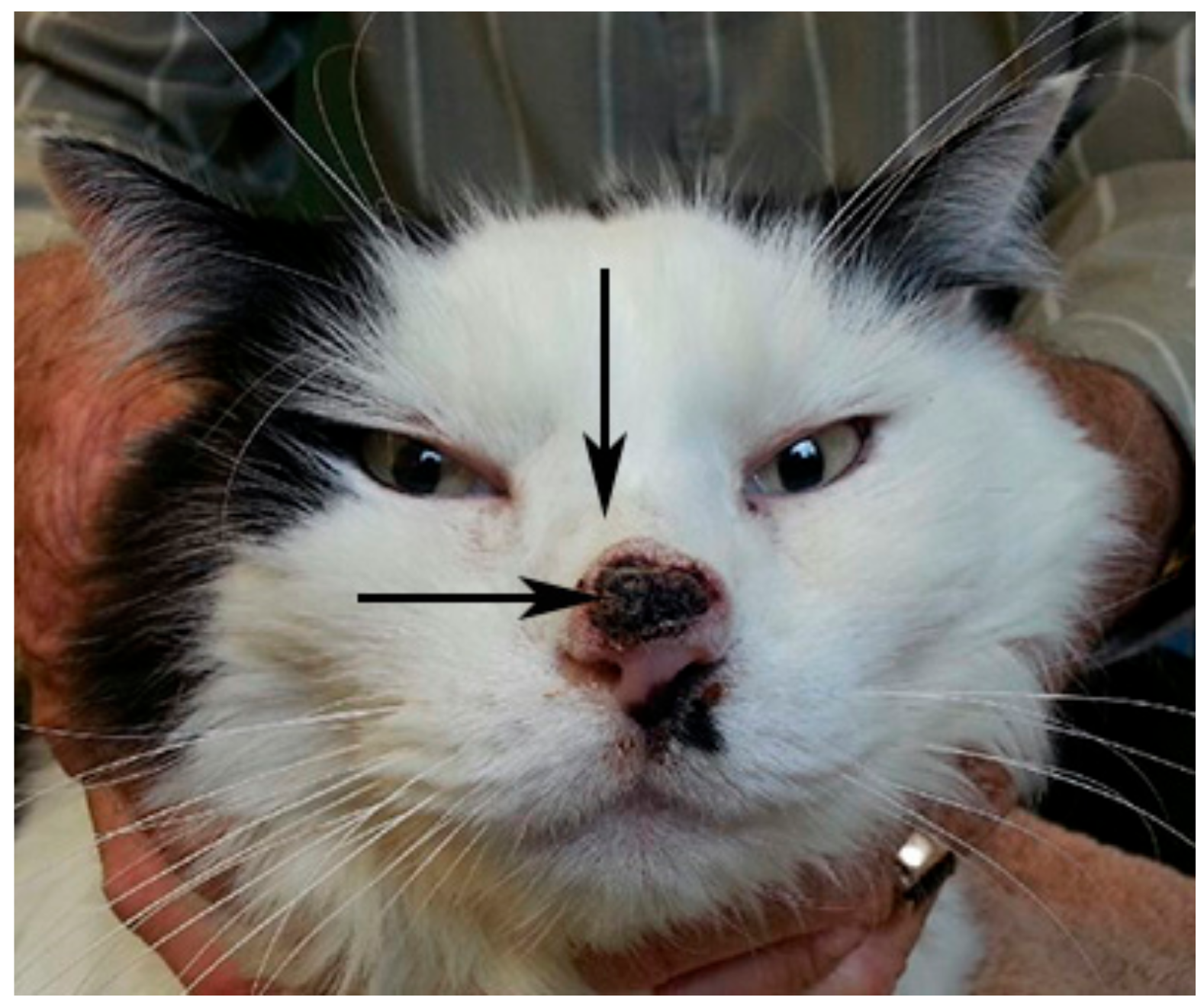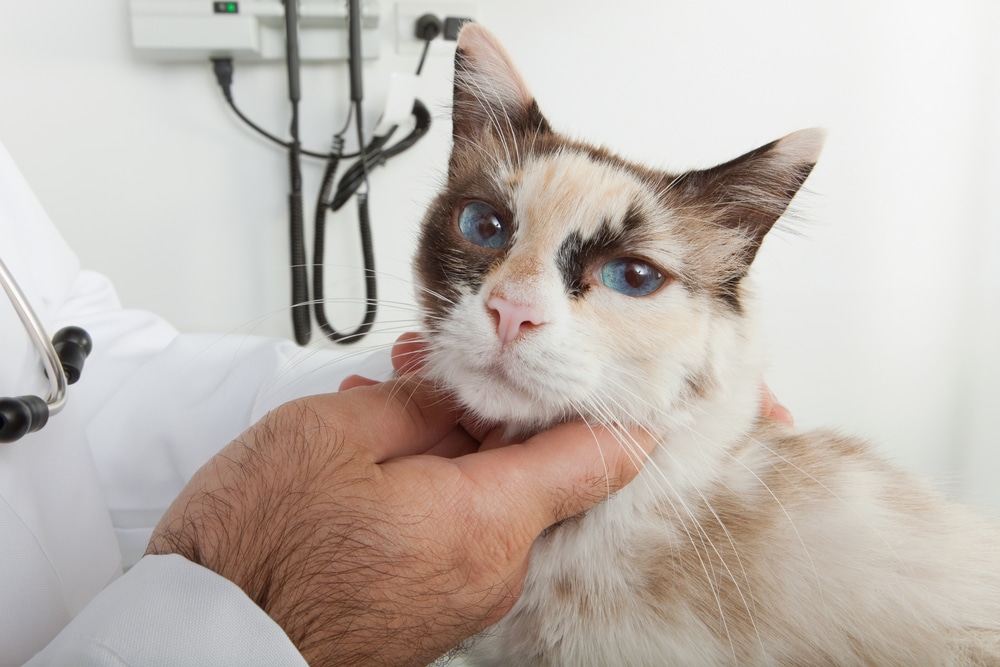neoplasia in cats nose
Lymphoma - Lymphoma is a common form of neoplasia in dogs and cats. If your pet has been diagnosed with one of these conditions it may need surgery in order for them to live as normal a life as possible.

Cat 6 Squamous Cell Carcinoma On Nose Stage T2 One Ect Session Download Scientific Diagram
Symptoms of nasal cancer in cats can remain concealed for as long as five years until the disease presents itself as a serious threat.

. These can cause bleeding from the nose breathing difficulty or facial swelling. Nonocular melanocytic neoplasia is considered uncommon in cats yet is routinely encountered in diagnostic pathology and recognized to exhibit a wide variation in biological behavior. Additionally unilateral lateral bone erosion and loss of teeth associated with adjacent intranasal disease were more prevalent in cats with neoplasia 78 and 518 respectively than in cats with chronic rhinitis 13 and 011 respectively.
Abnormal swellings that persist or continue to grow Sores that do not heal Weight loss Loss of appetite Bleeding or discharge from any bodily opening Offensive odor Difficulty eating or swallowing Hesitation to exercise or loss of stamina Persistent. Invasion into bone often occurs early and curative surgery is not possible. Nasal vestibule is the most common site for feline nasal SCC malignant melanoma and basal cell tumor.
Nasal adenocarcinomas originate from the glandular cells eg sebaceous glands in the nasal cavity. Radiographic signs in 64 cats that had radiography as part of the diagnostic work-up for suspected nasal disease were reviewed in a blinded fashion. Lymphoma is a common form of neoplasia in dogs and cats characterized by swelling of one or several lymph nodes in the body.
In dogs the most common nasal tumor is nasal adenocarcinoma. Conclusion This study demonstrates that the nose of cats is inhabited by much more variable and diverse microbial communities than previously shown. Chemotherapy alone yields only a 30 response rate and this response is usually short-lived.
In cats there is an indication that inflammation of the mucous membrane lining the nose or one of the paranasal sinuses may be the trigger that leads to a growth in the nasal cavity. Features that may assist in radiographic diagnosis of neoplasia include the appearance of unilateral aggressive lesions. Canine nasal cancer can be a result of an infection or exposure to toxins that affect the nose and olfactory systems like ammonia chlorine gas formaldehyde cigarette smoke or another foreign body.
Metastasis is more likely in carcinomas and usually occurs late in the disease. Subsequently dogs and cats are living longer lives. Nasal tumors are less common in cats than in dogs making up about 1 of tumors in cats.
While cancer is usually diagnosed in senior cats certain cancers can develop in cats of any age. In healthy cats and cats with FURTD Moraxella spp. This is a real statement from one owner of our Pet Hero pet that received treatment for nose cancer.
The most common types of nasal tumors in cats are squamous cell carcinoma SCC lymphoma. Lymphoma is the most common nasal tumor in cats followed by epithelial tumors including adenocarcinoma and squamous cell carcinoma. In cats lymphoma is generally reported to be the most common form of nasal neoplasia.
In cats there is some indication that chronic rhinitissinusitis may be an initiating factor for the subsequent development of nasal neoplasia. In addition to a swollen nose bridge you might notice your cat experiencing other symptoms such as. In cats 90 of nasal tumors are malignant the most common being lymphoma and the second most common being carcinomas.
20 26 pre-existing nasal damage either due to a foreign body lymphoplasmacytic rhinitis feline rhinotracheitis virus or calicivirus or neoplasia may compromise nasal defense mechanisms and allow fungal. There are many different forms of cancer and since the symptoms are so varied any lumps or bumps wounds that dont heal changes in behavior including appetite weight litter. Benign nasal tumors include adenoma 19 of epithelial tumors in cats basal cell tumor fibroma and neurofibroma.
Dogs and cats with nasal tumors usually present with a relatively advanced stage of the cancer in a critical location near the brain and eyes. Nasal tumors are found in the nasal cavity and the paranasal sinuses and affect cats. Cancer also called neoplasia presents in many different often nonspecific ways in cats.
Tumors of the nose and paranasal sinuses typically are very invasive locally and metastasize infrequently. Nasal lymphoma has been reported in FeLV positive as well as FeLV negative cats. Canine and Feline Nasal Neoplasia.
A nasal tumor is a type of cancer that results from the disorganized uncontrolled production of cells that line the nasal airway. Neoplasms may also develop inside the nose. Symptoms of neoplasia in cats include 4.
Was the most common genus while it was unclassified Bradyrhizobiaceae in cats with nasal neoplasia. 530387481 It is commonly confined to the nose and nasopharynx. 12 Radiation therapy is generally regarded as the gold standard for treatment of nasal lymphoma and treated patients often enjoy long median survival times with reports of 456 days with radiation alone and 174.
Neoplasia may also develop inside the nose of both cats and dogs. The signs with highest predictive value f. Dogs and cats of our society have outgrown their status as merely pets and are now considered our close companions and even family members.
These symptoms should be checked by your veterinarian. Final diagnoses in these cats were rhinitis in 27 primary nasal neoplasia in 21 and non-nasal disease in 16. Fungal infection in the nasal cavities of cats is rare though over the last 20 years several case reports can be found in the literature.
However a recent study suggested that up to 45 of cats may have multiorgan involvement. 108 When treated with multiagent chemotherapy the median survival time was 98 days. Accurate prediction of clinical outcomes is challenging with no widely recognized prognostic criteria.
Sneezing andor congested breathing Nasal discharge from one or both sides of the nose Discharge from eyes Loss of appetite Reverse sneezing. This shift in their roles has led to pet owners seeking improved preventative medicine for their four-legged friends. In cats the most common nasal tumor is nasal lymphoma.
Malignant early aggressive treatment is essential. Bleeding from the nose breathing difficulty or facial swelling are signs that may indicate neoplasia and should be checked by your veterinarian. High individual variability was observed.

Nasal Squamous Cell Carcinoma In Cats Veterinary Partner Vin

Tumors Of The Respiratory System Veterian Key

Nose Cancer In Cats Causes Symptoms Treatment All About Cats

Nose Cancer In Cats Causes Symptoms Treatment All About Cats

Canine And Feline Nasal Tumors

Viruses Free Full Text Identification Of A Novel Papillomavirus Associated With Squamous Cell Carcinoma In A Domestic Cat Html

Nasal Cancer In Cats Advanced Radiation Therapy Treatment For Dogs Cats With Cancer Petcure Oncology

